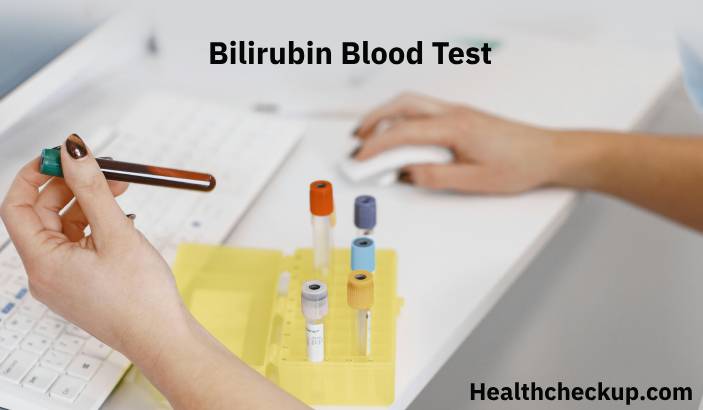A disorder of the kidneys and its regulatory mechanisms results in poor kidney function. Diabetes Insipidus is one such rare disorder. Diagnosis and the tests for Diabetes Insipidus are done in a health setting under the request and guidance of qualified medical personnel.
Every day, our kidneys filter 120 to 150 quarts of blood and play a role to maintain fluid balance in our bodies. The balance is maintained by having liquid intake and removal of extra fluid. To take in fluid, a feeling of thirst is triggered. You then drink a liquid which increases the amount of fluid available in your body. To remove fluids, you urinate.
- Sweating and breathing also remove fluid from the body.
- Diarrhea leads to rapid loss of fluid in the body.
- If you have diarrhea that lasts for more than 12 hours, get medical attention quickly.
A small gland called the hypothalamus sits at the base of your brain. This gland produces a hormone called Vasopressin that controls the rate of fluid removal through urine. The pituitary gland collets vasopressin from the hypothalamus and stores it. It only releases the hormone when your body has a low level of fluid. Once released vasopressin signals your kidneys to produce more concentrated urine of a smaller volume. With little or no vasopressin in your body, the kidneys let go of more fluid leading to larger amounts of urine.
What is Diabetes Insipidus?
Diabetes Insipidus is a type of diabetes that results in large amounts of urine produced in the kidneys. The urine is often dilute and quite odorless and colorless. In most people, you produce about 1 to 2 quarts of urine every day. With Diabetes Insipidus, you have to urinate 3 to 20 quarts per day. Diabetes Insipidus makes you frequently thirsty but does not alter your blood glucose levels.
Types of Diabetes Insipidus
There are four types of Diabetes Insipidus categorized according to what causes each. The four types are
-
Nephrogenic Diabetes Insipidus
This results from chronic kidney disease and inherited gene anomalies and mutations. Medication and blockage of the urinary tract can also lead to Nephrogenic Diabetes Insipidus. Other suspected causes of this type of Diabetes Insipidus are high calcium levels in blood and low blood potassium levels.
-
Gestational Diabetes Insipidus
This is Diabetes Insipidus occurring only in pregnant women. An enzyme produced by the placenta sometimes reacts with a pregnant mother’s vasopressin. In other cases of gestational Diabetes Insipidus, a lot of prostaglandin is produced leading to a reduction in the kidneys’ sensitivity to vasopressin.
-
Central Diabetes Inspidus
This type of Diabetes Insipidus is as a result of damage to the pituitary gland or hypothalamus. This can happen during surgery, due to infection and inflammation, head injury and due to having a tumor in the head.
-
Dipsogenic Diabetes Insipidus
Dipsogenic Diabetes Insipidus is caused by a fault in your body’s thirst mechanism. Such a fault could cause an increase in thirst and liquid intake. This suppresses secretion of vasopressin. High liquid intake leads to increased urine output in the kidneys. Some medications and mental health problems are believed to predispose you to Dipsogenic Diabetes Insipidus.
Tests for Diabetes Insipidus
Diabetes Insipidus is diagnosed using a number of pointers and symptoms you describe to your doctor. A physical exam is necessary. Your family’s medial history as well as your own are also considered. Diagnostic tests for Diabetes Insipidus may then be requested by your doctor. Tests involved in diagnosing Diabetes Insipidus are
- Blood Tests – Blood tests for Diabetes Insipidus diagnosis measure the levels of calcium, sodium and bicarbonates in a blood sample collected via venipuncture. Diabetes Insipidus sodium levels are usually higher than average. A blood test also helps identify some types of Diabetes Insipidus.
- Fluid deprivation test – The fluid deprivation test uses thirst to see how much fluid you lose from your body. Substitutes of vasopressin may be given by your doctor in the diagnostic process. There are two versions of the fluid deprivation test one long and the other short.
- Urinalysis – An analysis of your urine will be done. It checks for concentrations of electrolytes in your blood.
- MRI (Magnetic Resonance Imaging) Scan – This imaging test helps your doctor identify anomalies in your body organs. Of interest are your kidneys, the hypothalamus and the pituitary gland.
In laboratory diagnosis of Diabetes Insipidus, urine and plasma are analyzed. You have Diabetes Insipidus if your results are below these minimum diabetes insipidus lab values
- A urine specific gravity of 1,005 or less.
- Urine osmolality of less than 200 mOsm/kg
- Average plasma osmolality should be 287 mOsm/kg in a randomly taken sample.
Treatment For Diabetes Insipidus
Diabetes Insipidus is not life threatening if managed well. Once diagnosed, you are advised to be drinking enough fluids to replace what you may lose through urine. This prevents dehydration which can be fatal. Treatment of diabetes insipidus must be done under the stewardship of a qualified medical practitioner. Either an endocrinologist or a Nephrologist should be involved in the treatment process.
Diet and nutrition may not have much impact in the treatment of diabetes insipidus. Synthetic hormones and medication are the most reliable in treating diabetes insipidus. After tests for diabetes insipidus give a positive diagnosis, follow the recommendations of your healthcare provider. Additionally, strive to keep your symptoms under control. It will save you from further complications and allow you to live a normal life.
Medically Reviewed By

Professionally, a trained Microbiologist and Plant operator, Eustace is an experienced health content writer who is passionate about helping people lead a healthy life.








